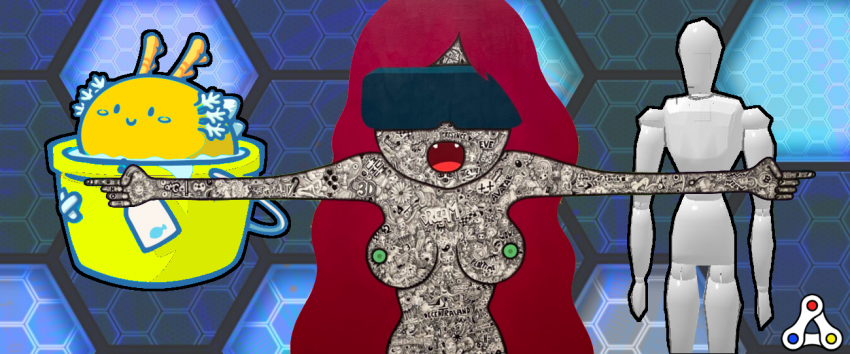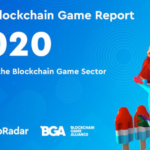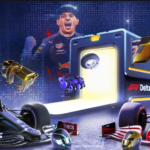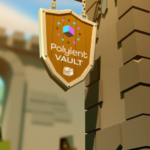In 2020 the NFT Market is growing at a rapid rate. There’s a growing interest from traditional companies looking for new kinds of business. In addition there’s more money moving into this space as well, while the technology keeps developing. In this article we look at the biggest trends in the NFT market during the first six months of 2020.
Blockchain gaming isn’t only about games, but it’s also about blockchain and non-fungible tokens. About player ownership and digital collectibles. Even though blockchain gaming is important here at Play to Earn, we can’t deny the connection this market shares with other NFT-related markets.
We’re now six months into 2020 and it’s pretty much not the year most of us expected. From devastating fires in Australia and the Amazone, to a global pandemic that killed hundreds of thousands, and from mourning the loss of a basketball icon to a revolution against systematic racial oppression. This year is already one for the history books, and we’re only halfway.
Amidst on the social unrest and natural disasters, the world of cryptocurrencies and blockchain technology has steadily been growing. We’ve identified five trends that are pushing the NFT market during these first six months of 2020. These trends show that the blockchain gaming market and NFT technology is developing and getting interest from businesses, collectors, and users alike.
Companies Jumping into NFT Market
Early in the year Square Enix announced that it’s part of a group investors that put one million dollars into the company behind the blockchain-powered virtual world The Sandbox. It’s a small step, but an interesting one nonetheless for the company behind gaming brands like Final Fantasy, Tomb Raider, Space Invaders, Arkanoid and Bubble Bobble.
The Sandbox has been playing a vital role in attracting mainstream brands. Animoca Brands, the mother company behind a web of organizations, has already been working on a blockchain-powered version of Rollercoaster Tycoon. Therefore the announcement of Atari appearing inside The Sandbox wasn’t the biggest shock of them all. That same company is also planning to launch its own Atari Token later this year, which will be used in their own blockchain games.
The other gaming company that has positioned itself at the forefront of the blockchain gaming space is Ubisoft. The French gaming giant is investing time, money and effort in developing and learning about the blockchain gaming space. It seems like only a matter of time before they will publish actual blockchain games. At this very moment they are organizing the fifth entrepreneurs lab, which features blockchain startups like Sky Mavis, Sorare, Xaya and Planetarium. In June they even launched their first blockchain product for charity.
While these projects are more gaming oriented, the world of NFT collectibles has also attracted some major brands. Trading card companies like Panini and Topps have launched their own products, while there are digital collectibles in the making from brands like Cartoon Network, Street Fighter, Adventure Time and Star Trek. In addition Marvel Games and the Wax blockchain have partnered up to create digital collectibles.
The Metaverse is Coming
The concept of the metaverse is a bit complex. It’s basically a virtual world that embraces all kinds of other virtual worlds. The Sandbox refers to their own virtual world as a metaverse, but that’s not it. The real metaverse connects The Sandbox with Cryptovoxels, with Axie Infinity and League of Kingdoms. It a virtual universe that’s seamlessly connected. The description on Wikipedia is pretty cool:
The Metaverse is a collective virtual shared space, created by the convergence of virtually enhanced physical reality and physically persistent virtual space, including the sum of all virtual worlds, augmented reality, and the Internet.
Web 3.0 is a technology that certainly empowers the concept of the metaverse. For example, if you have Metamask installed in your browser, this ‘passport’ allows you to login to all kinds of applications. A bit more close to home is the success of virtual worlds. On February 20th 2020 Decentraland opened to the public, while Cryptovoxels sold out its Origin City in April. Together with Somnium Space these virtual worlds have seen the value of their digital land grown tremendously. At the same time The Sandbox is still busy with its pre-sales, through which it already made more than 1 million dollars.
The M3 Organization is one of the groups working on connecting VR Chat with Minecraft and Anarchy Arcade with Cryptovoxels. Cryptovoxels and Somnium Space already built a teleport between these two completely different products. In an ideal metaverse players are able to bring their wealth into other virtual worlds, while keeping the same digital identity.
Tokenization Becoming More Complex
Blockchain is a super interesting technology, because it empowers users. Within the gaming world players will be able to get full ownership over in-game assets. This means that a certain in-game assets has been tied to a cryptographic token on the blockchain. The person who has this token in their wallet, is the owner. Only owners are capable of using a tokenized digital asset. For example, if there are only ten swords in a game, then only those who own the token get to use it.
This is already a rather complex concept, because we’re talking about digital assets. Were we talking about ten physical swords, it would suddenly make sense. Through smart contract blockchain technology can add all kinds of tools that allow users to lend or borrow tokens, which gives other users temporarily ownership over a certain asset.
However, over the past few months there have been tools developed that allow users to get partial ownership over a non-fungible token. This way investors who lack the financials, can still buy a certain percentage of ownership over a certain token. One of the projects that pioneering with this, is Niftex.
On the other end of the spectrum there’s Lendroid and their metatokens. Their tools not only allow users to lend or borrow a token, but through their software a token itself can be tokenized. This can be useful if users only want to give access to one certain element of their token.Through these so-called metatokens the owner of an asset can give another user limited access to change for example a layer in a piece of art or temporarily access to a virtual location. Tokenization and smart contracts basically allow token-owners to safely lend their digital assets without having to worry to the person loaning, is messing things up.
Growing Need for Second-Layer Solutions
Not all trends are positive. During the second quarter of 2020 the gas fees on the Ethereum network were very high. Research from DappRadar underlined that the blockchain gaming activity dropped significantly because of this. Even though many are waiting for Ethereum 2.0, some believe this is not the solution. To many within the Ethereum community a second-layer is a much better solution. In recent months we’ve finally seen some of these solutions pop-up. The Matic Network has stepped up where the Loom Network abandoned many in the blockchain gaming space.
In addition some projects are building their own solutions. Sky Mavis is going to introduce their game Axie Infinity to their own sidechain, dubbed Ronin. At the same time Crypto Dynasty, formerly known as EOS Dynasty, will also be using a custom side-chain to solve some of the scaling issues on Ethereum. No wonder gaming companies come up with their own solutions, because the Ethereum developers are still not finished with their work on Plasma or other second-layer solutions. The solutions will come, but it won’t happen tomorrow.
Rise of Crypto Art
Perhaps driven by COVID-19, but while museums closed all around the world it was crypto art that thrived. SuperRare is the biggest name, responsible for almost 1.3 million dollars in sales. Known Origin has reached 285 thousand dollars in sales, while MakersPlace is just a few thousand dollars behind according to data from Nonfungible.
The introduction of blockchain technology allowed digital artists to create unique artworks. Ownership and rarity are now verifiable through the blockchain, creating true value. Last year the crypto art market was good for 559 thousand dollars in trading volume. This was a 115 percent growth compared with the year before.
Where the crypto art space was limited to Crypto Punks in 2017, the market has now diversified. In addition collectors can now also showcase their digital art in virtual worlds, thanks to Cryptovoxels, Somnium Space and Decentraland.
This year has already created renewed interest in Crypto Punks, with some of these collectibles selling for more then twenty thousand dollars each. This year alone Superrare has trade 906 thousand dollars worth of digital art, while Known Origin has 223 thousand dollars in registered trades.
If we add the trading volume of these projects together and add newer initiatives like Async Art and Avastars, then there has been 2.25 million dollars in trading volume this year so far. We’re only six months into the year and the entire crypto art market has already grown 4 times. This is not only important for digital art, but also for blockchain gaming. Because this way a non-fungible token, or NFT, is getting more recognition as a digital asset with actual value.
Top 10 – Blockchain NFT projects of 2020 (so far)
10. Avastars – Computer generated art responsible for almost 400 thousand dollars in trading volume.
09. Wax – Also wanted to mention blockchain technology here. Wax launched collectibles with Topps (Garbage Pail Kids) and announced partnership with Marvel Games. Getting mainstream brands to dip their toes into NFTs.
08. Decentraland – Launched in February. This virtual world has been used for several online conventions and panels during the COVID-19 pandemic.
07. Sorare – The first licensed blockchain-powered fantasy football game with national leagues from all over the world.
06. Dapper Labs – The company behind Cryptokitties is moving its flagship brand into new universes by setting up collaborations with famous designers. In addition NBA Top Shot is going into beta soon, while their Flow blockchain is preparing to launch.
05. Crypto Punks – Three years old and still going strong. During May there were some record sales above 20 thousand dollars for one collectible.
04. The Sandbox – No product yet, but The Sandbox is doing very well with their pre-sales. In addition they attracted mainstream brands and recognition among their peers.
03. Superrare – Became one of the leading platforms for Crypto Art. Pushing boundaries by also embracing digital 3D statues.
02. Cryptovoxels – Origin City has sold out. New islands are being founded. Ben Nolan keeps adding features. Yes, we also bought a plot.
01. Axie Infinity – The best blockchain game on the market that embraced decentralized finance (DeFi) with their Small Love Potions and the play-to-earn business model. They launched their beta in January and kept building their game, with the introduction of land and their own side-chain coming soon.





